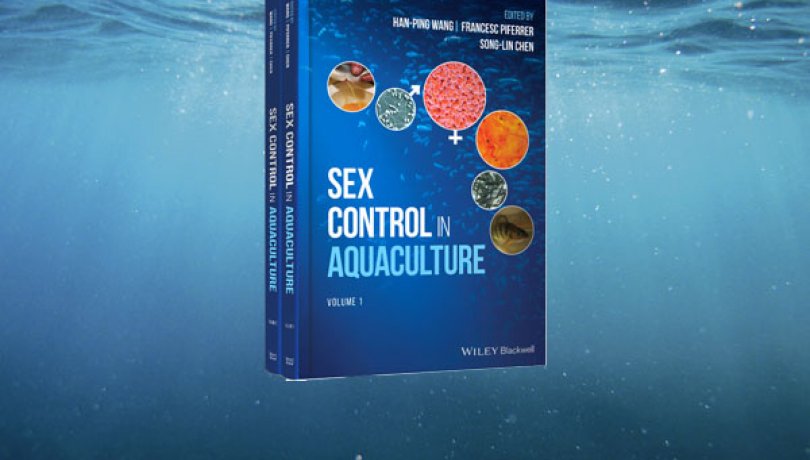ICM researchers Francesc Piferrer and Mercedes Blázquez have participated in the edition of the book Sex Control in Aquaculture, published in January.
According to the latest data from the World Food and Agriculture Organization (FAO 2018), aquaculture is the food production sector with the fastest growth (around 6% per year) and contributes more than 50 % of aquatic products consumed around the world. Among the cultivated species, the fish (54.1 million tonnes) and crustaceans (7.9 million tonnes), with an approximate market value of 175,000 million euros, stand out.

ICM researchers Francesc Piferrer and Mercedes Blázquez have participated in the edition of the book Sex Control in Aquaculture, published in January.
According to the latest data from the World Food and Agriculture Organization (FAO 2018), aquaculture is the food production sector with the fastest growth (around 6% per year) and contributes more than 50 % of aquatic products consumed around the world. Among the cultivated species, the fish (54.1 million tonnes) and crustaceans (7.9 million tonnes), with an approximate market value of 175,000 million euros, stand out.
The control of the proportion of sexes in fish and crustaceans, the subject of the book, pursues different objectives. First of all, many species present a sexual dimorphism in terms of growth. Therefore, there is an interest in favoring the production of the highest growth sex. However, in some species it is necessary to prevent early maturation and reproduction, whereas in others it is necessary to prevent the effects that these phenomena may have on animals health and product quality. In addition, in hermaphrodite species, the control of males and females proportion facilitates the handling of the reproductive individuals. Finally, there are some species where gonads or eggs have a special economic value, such as caviar. Therefore, control of the sex ratio is very important in aquaculture to improve production, reduce energy consumption and eliminate a number of reproduction-associated problems. In addition, some of the methods can also be used to manage natural populations and to eliminate invasive species, an aspect also dealt with in the book.
Sex Control in Aquaculture is aimed at scientists interested in animal sex determination mechanisms, biologists who work in the study of different aspects of fish and crustacean reproduction, including reproductive and growth endocrinology, genetics, molecular and genomic biology; responsible for R +D and technical personnel of companies in the aquaculture sector; natural resource managers, and students.
Sex control in Aquaculture brings together the current basic knowledge about sex determination and sexual differentiation
About 90 specialists from research centers in 19 different countries have collaborated in the writing of this book. With eight chapters, the first part deals with the theoretical and practical basis of determining sexual differentiation and controlling sex in aquaculture. These chapters show the current knowledge about basic aspects of genetic, endocrine and environmental mechanisms for sex determination and sexual differentiation, including epigenetic regulation. Several chapters also provide information on the techniques of chromosome manipulation, hybridisation and new CRISPR genome editing techniques. Sections II to XI (chapters 9 through 41) contain state of the art in respect of 35 species and groups of species of fish and crustaceans of high commercial importance, with detailed protocols and key information summarized in boxes of text The book ends with an index of species, index of contents and color sheets.
Sex Control in Aquaculture has been published by John Wiley & Sons Ltd. and edited by Han-Ping Wang, director of the Aquaculture Research Center, Aquaculture Genetics and Breeding Laboratory, The Ohio State University, Piketon, Ohio, USA; Francesc Piferrer, head of the Reproduction Biology Group and Professor of Research at the ICM, from the CSIC, in Barcelona; and by Song-Lin Chen, Professor and Director of the Laboratory for Aquaculture Biotechnology and Genomics, Yellow Sea Fisheries Research Institute, Chinese Academy of Fishery Sciences, Qingdao, China. The book consists of 41 chapters, divided into 11 parts, with a total of 900 pages divided into two volumes for more convenient handling.
This book is available at ICM's library and can be acquire at Wiley.